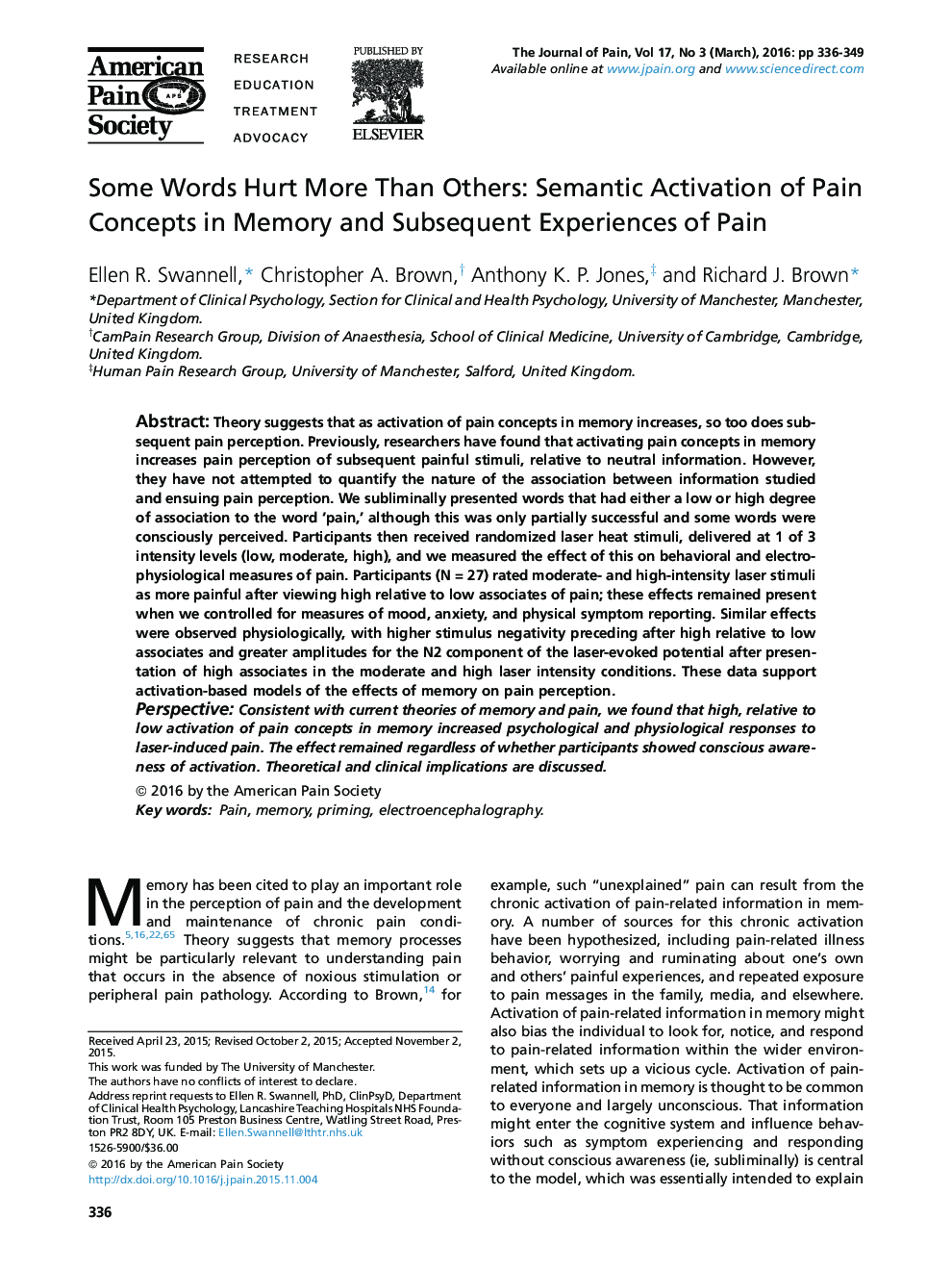| Article ID | Journal | Published Year | Pages | File Type |
|---|---|---|---|---|
| 2722848 | The Journal of Pain | 2016 | 14 Pages |
•Increased semantic association between primes and ‘pain’ increased pain responses.•Effects were present for subjective ratings of pain intensity and electroencephalography components.•Activation-based cognitive models of memory and pain perception were supported.
Theory suggests that as activation of pain concepts in memory increases, so too does subsequent pain perception. Previously, researchers have found that activating pain concepts in memory increases pain perception of subsequent painful stimuli, relative to neutral information. However, they have not attempted to quantify the nature of the association between information studied and ensuing pain perception. We subliminally presented words that had either a low or high degree of association to the word ‘pain,’ although this was only partially successful and some words were consciously perceived. Participants then received randomized laser heat stimuli, delivered at 1 of 3 intensity levels (low, moderate, high), and we measured the effect of this on behavioral and electrophysiological measures of pain. Participants (N = 27) rated moderate- and high-intensity laser stimuli as more painful after viewing high relative to low associates of pain; these effects remained present when we controlled for measures of mood, anxiety, and physical symptom reporting. Similar effects were observed physiologically, with higher stimulus negativity preceding after high relative to low associates and greater amplitudes for the N2 component of the laser-evoked potential after presentation of high associates in the moderate and high laser intensity conditions. These data support activation-based models of the effects of memory on pain perception.PerspectiveConsistent with current theories of memory and pain, we found that high, relative to low activation of pain concepts in memory increased psychological and physiological responses to laser-induced pain. The effect remained regardless of whether participants showed conscious awareness of activation. Theoretical and clinical implications are discussed.
